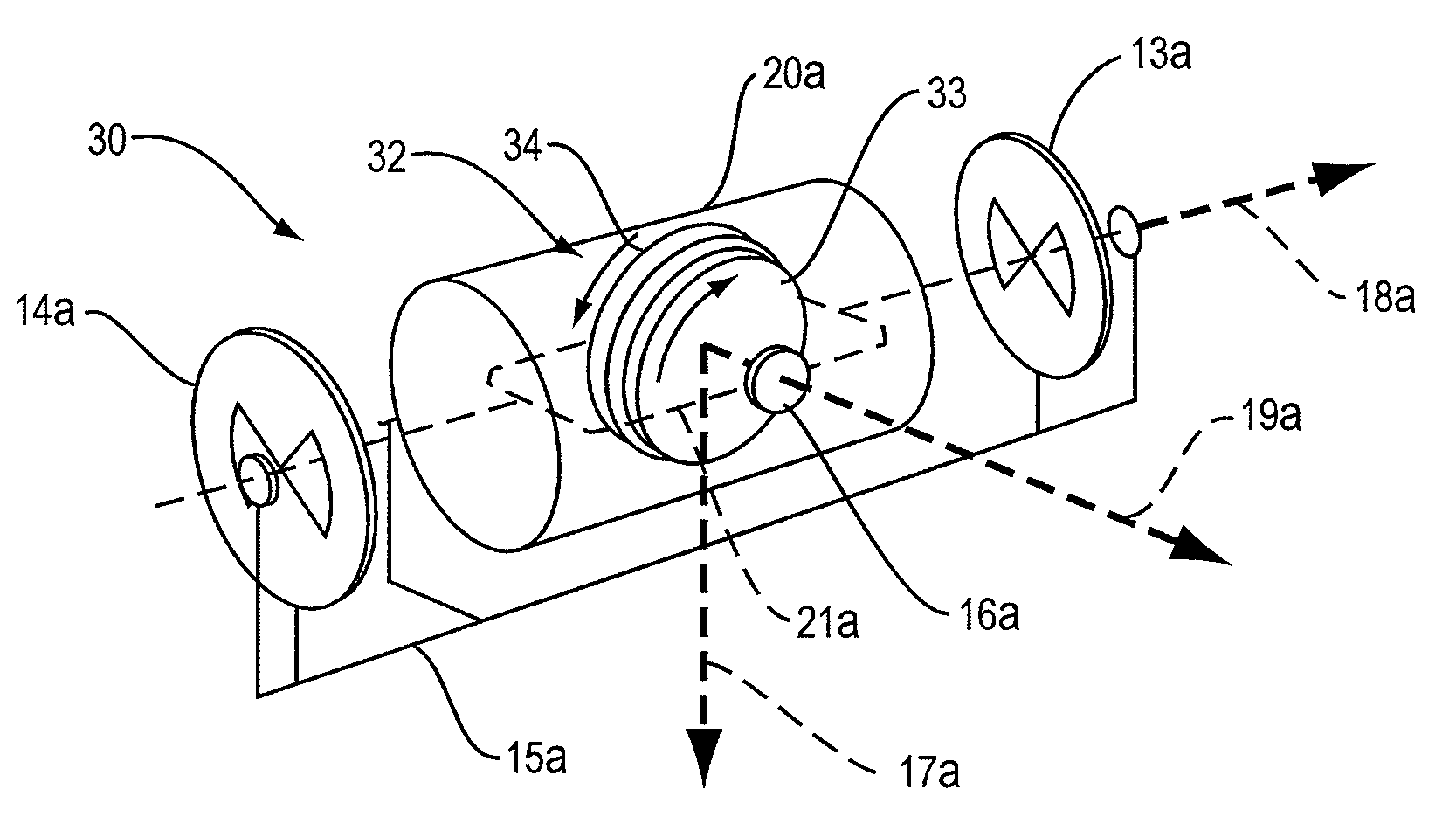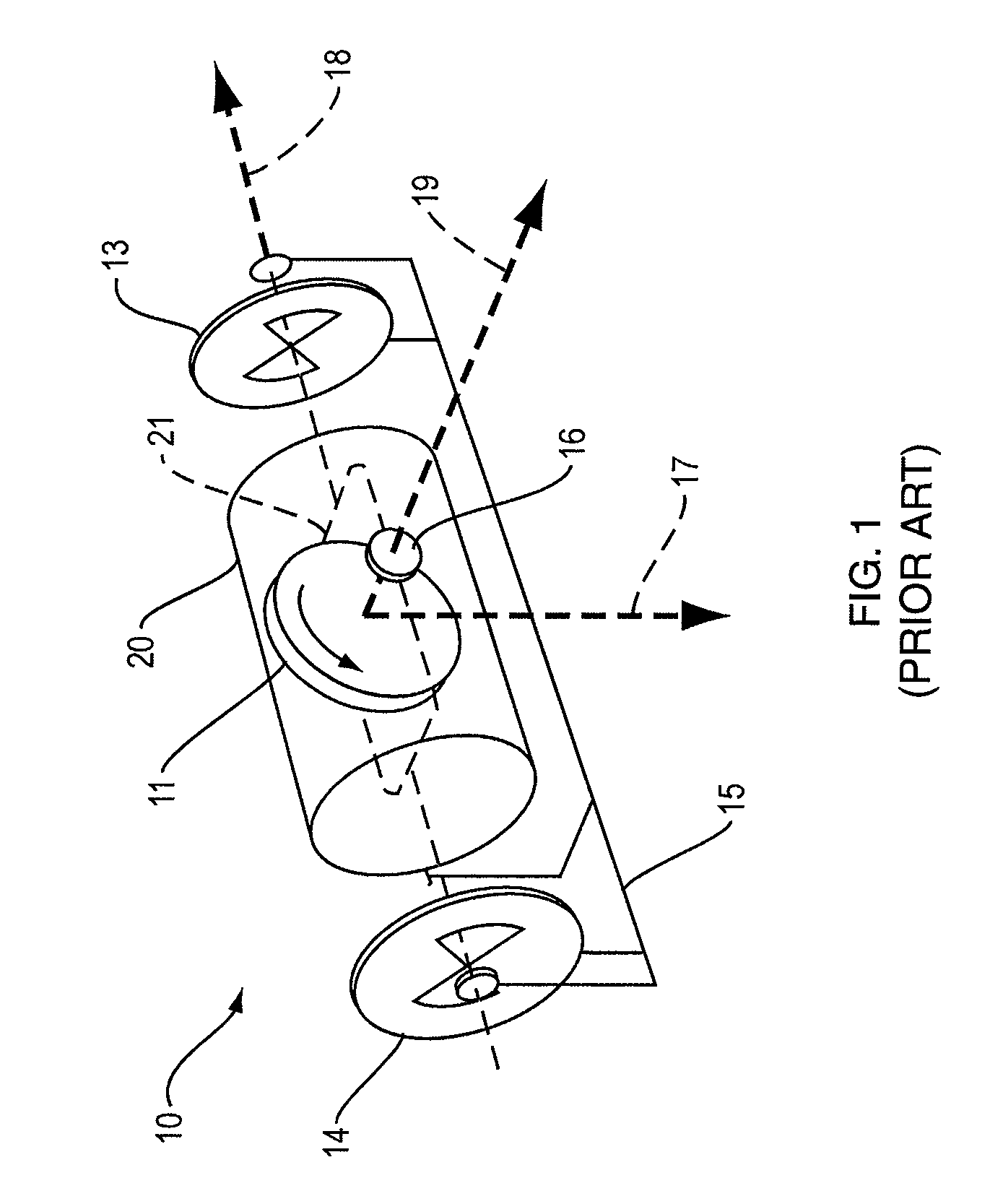Gyroscope and pendulous gyroscopic accelerometer with adjustable scale factor, and gravity gradiometer using such
- Summary
- Abstract
- Description
- Claims
- Application Information
AI Technical Summary
Benefits of technology
Problems solved by technology
Method used
Image
Examples
Embodiment Construction
[0052]Inventive gyro 30, FIG. 2, accomplishes an adjustable scale factor through fine control of the net angular momentum of rotating gyroscopic element 32, which in the embodiment comprises counter-rotating wheels, but could comprise masses other than wheels, such as annuli. Element 32 is made pendulous by placing an appropriate mass at a fixed distance along the gyro's spin reference axis. Gyro element 32 comprises counter rotating wheels 33 and 34; both wheels 33 and 34 rotate about spin reference axis (SRA) 19a, but in opposite directions. Element 32 is made pendulous through mass 16a that is offset from input axis (IA) 17a and located on SRA 19a. Gimbal 21a, which carries element 32, is rigidly attached to torque-summing member (TSM) 20a. Specific force input applied along the gyro's input axis 17a will produce a pendulous torque about the output axis (OA) 18a. This torque will produce a rotation of TSM 20a about the output axis which is detected by the signal generator (SG) 14...
PUM
 Login to View More
Login to View More Abstract
Description
Claims
Application Information
 Login to View More
Login to View More - R&D
- Intellectual Property
- Life Sciences
- Materials
- Tech Scout
- Unparalleled Data Quality
- Higher Quality Content
- 60% Fewer Hallucinations
Browse by: Latest US Patents, China's latest patents, Technical Efficacy Thesaurus, Application Domain, Technology Topic, Popular Technical Reports.
© 2025 PatSnap. All rights reserved.Legal|Privacy policy|Modern Slavery Act Transparency Statement|Sitemap|About US| Contact US: help@patsnap.com



